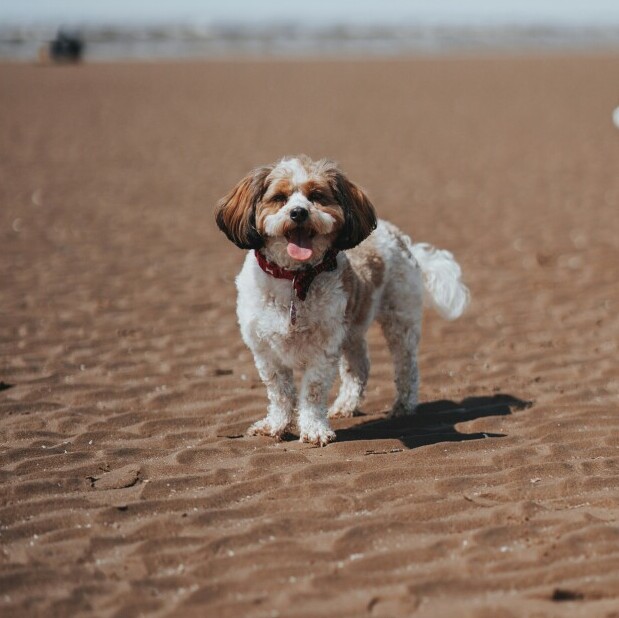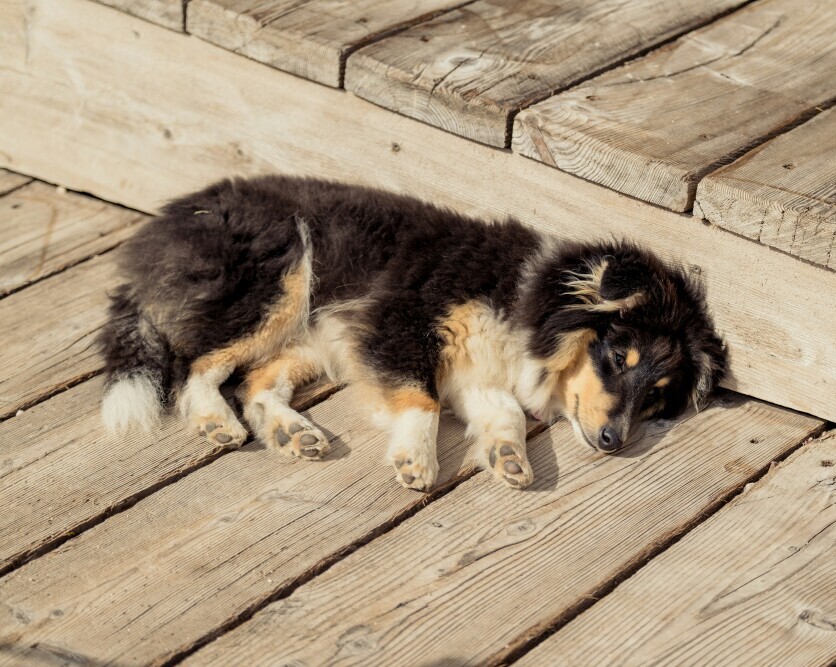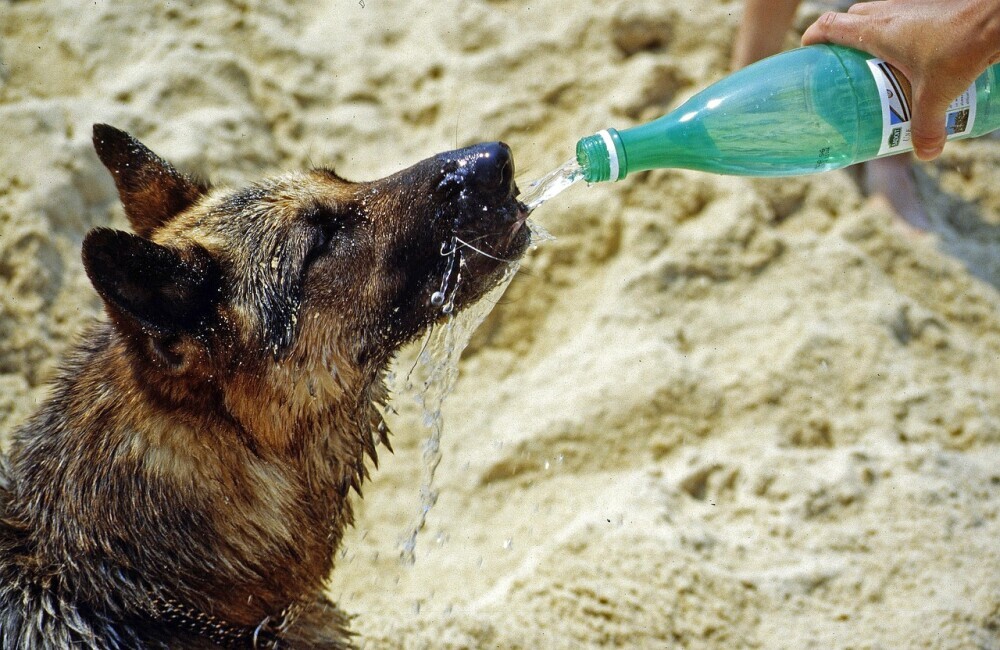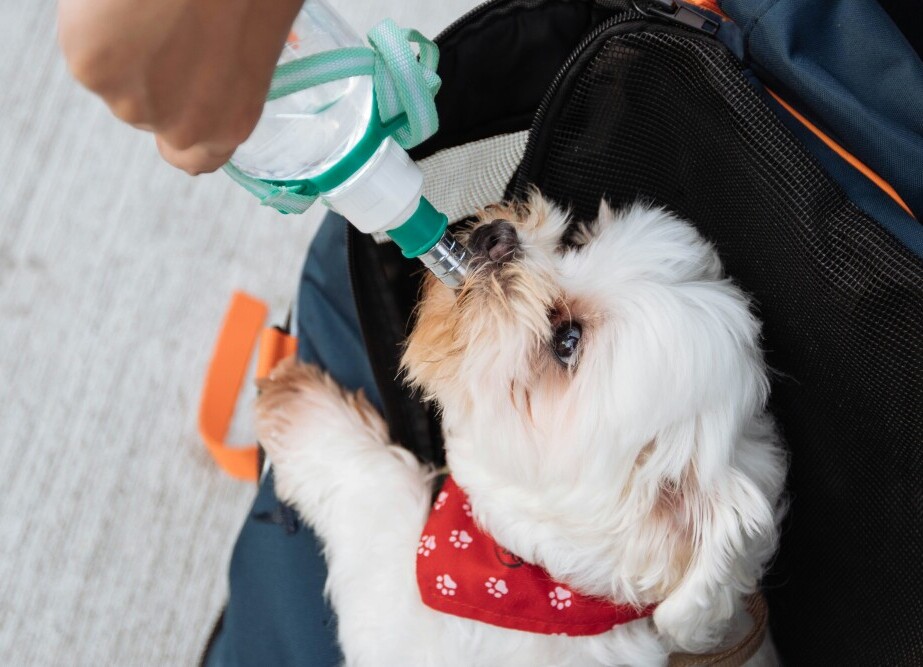
A few of the links in this post are affiliate links. If you buy something, we may earn a small commission (no extra bones from your wallet 🐾). Thanks for helping support the site and all of the dog adventures!
Heatstroke in dogs isn’t just a buzzword. It’s a real concern and it can sneak up faster than you’d think. Picture this: the sun is blazing, and your furry buddy is bouncing around, tongue lolling out, having the summer of its life.
But behind that playful demeanor, heatstroke could be lurking, ready to turn a joyful outing into an emergency. We want you to keep your dog safe and healthy, so here are some tips for keeping them from overheating in the summertime.
Some dogs are more prone to heat troubles, and it depends on a mix of factors. Breeds with shorter snouts, like Bulldogs or Pugs, often struggle more in the heat. Add in factors like age, weight, and even the color of their coat, and you’ve got a perfect storm for overheating.
It’s crucial to know what to watch for, so know the risks for your particular breed. Be aware if your dog’s breed has a history of overheating. You may need to take extra precautions to keep your dog from having issues in the sweltering heat.
Your dog may start showing behavioral changes when things get too heated. You might see them slow down, act confused, or even become a bit grumpy. These behavioral shifts are more than just mood swings.
They’re early hints that they might be getting too hot. When their mood changes while they’re out in the hot sun, this is a sign that they may be getting too hot.
When you notice your pup panting excessively or drooling more than usual, it’s time to take action. These physical signs are their way of saying, “Hey, I need some cool-down time!” Don’t ignore these signs—relieve them from the heat immediately. Get them into the shade it or a cooler area and give them some cool water.
Overheating can be dangerous for dogs. Learn how to protect your pet in our Dog Health and Wellness Guide.

Recognizing Overheating: A Dog’s Cry for Help
Dogs have their way of telling us when they’re too hot, but we need to be tuned in to their signals. Recognizing these signs early can be a game-changer. Lethargy, for instance, is common. A usually bouncy dog suddenly acting tired might be overheating.
Drooling is another clue. If your dog starts to drool more profusely than usual, it’s a red flag. Coupled with difficulty breathing or an unsteady gait, and it’s time to act. Your dog may drool, but pay attention when the drool starts to become excessive or more than usual. This could be a sign that they are overheating.
Regular heat discomfort and heatstroke are not the same, and telling them apart can save valuable time. Routine panting after a run around the yard is normal, but when it becomes relentless even while doing nothing, it’s a warning sign. Know how to tell the difference between normal behavior and not so normal behavior.
Consider a few case examples: a Labrador who lies flat on the pavement, refusing to move, or a Poodle whose tongue is hanging out non-stop while producing exaggerated saliva. These aren’t just tired dogs—they’re calling for help! Get them out of the heat immediately and give them some water.
Identifying these signs and symptoms quickly is crucial. The faster you recognize your dog’s overheating, the better equipped you are to manage the situation without escalating to a life-threatening issue. Don’t wait too long; more serious symptoms could soon follow if you leave them in heat for too long.
Hydration and diet affect heat tolerance. See more in Dog Nutrition 101: Feeding for Every Life Stage.

Immediate Actions to Cool Down an Overheated Dog
When you catch those early signs of overheating, fast action is key to keeping things from spiraling. First aid for an overheated dog isn’t tricky, but every step counts. The sooner you get them into a safe location, the better. Time is valuable when you’re dealing with heatstroke.
Your go-to move should be relocating your pup to a shaded or air-conditioned area. This immediately stops them from getting any hotter. If you’ve got a fan, use it for some extra cooling power. Keep them in a cool area with a cool breeze blowing.
Water is your best friend here, but there’s a right and wrong way to go about it. Splashing cool (not cold) water on their paws or belly can help reduce their body temperature. Please don’t douse them with ice-cold water, as it can cause shock. Get their body to cool down gradually.
Sips of water will help with hydration, not gulps. You want to avoid overloading their system. Just offer small amounts that they can handle without gulping it all down in one go. Don’t let it drink the whole bowl, just give it a few gulps at a time. Keep the water cool but not freezing.
If things aren’t improving, or your dog seems worse, it’s time to make that call to the vet. Trust your instincts—when they need a professional hand, delay makes no sense. Better safe than sorry. If you tried all of these steps and you dog isn’t showing signs of improvement, you may need to take it to the pet emergency.
While waiting for help or en route to the vet, keep up the cooling measures. It’s going to increase their comfort and reduce the risk of complications along the way. Continue to keep cooling your dog until a vet can take a close look at them.
Excessive panting or agitation may signal overheating. Learn solutions in Common Dog Behavior Problems and How to Fix Them.

Proactive Measures: Keep Your Dog Cool and Safe All Summer Long
Keeping your dog cool isn’t just about responding to overheating—it’s about prevention, too. Creating a safe, cool environment should be top priority during those sizzling summer months. Stay on top of your dog’s health by knowing when its too hot, and providing enough cool water and time in the shade.
Start by ensuring there’s always shade available, whether it’s a canopy outside or a cool spot indoors. And don’t skimp on hydration; always have fresh water easily accessible for your furry pal. Make sure there is a place for them to drink in the shade and that the water stays cool.
Investing in some practical cooling products can make a big difference in your dog’s comfort. Cooling mats and vests are great for lowering their body temperature, while portable fans can be lifesavers during outings. Anything to keep their body temperature from running too high.
Think about the timing of your dog’s activities. Walks or playtime are best scheduled for early morning or late evening when the sun isn’t at full blast. Avoid the midday scorch when it’s just too hot to be outside safely.
Educating everyone in your household about the signs of overheating and effective cooling strategies ensures that everyone’s on the same page. This way, your dog gets consistent care, no matter who’s on watch duty.
Staying proactive keeps the fun in your summer plans and your dog happier and healthier, ready to enjoy the sunny days without a hitch. They will be ready to take summer beach days with you, just remember to be ready for them!
Senior dogs are more prone to heat-related issues. Find tips in the Complete Guide to Caring for Senior Dogs.
